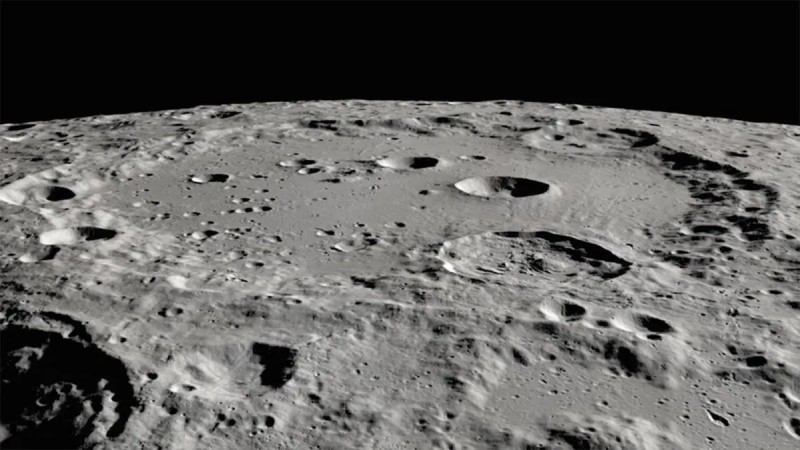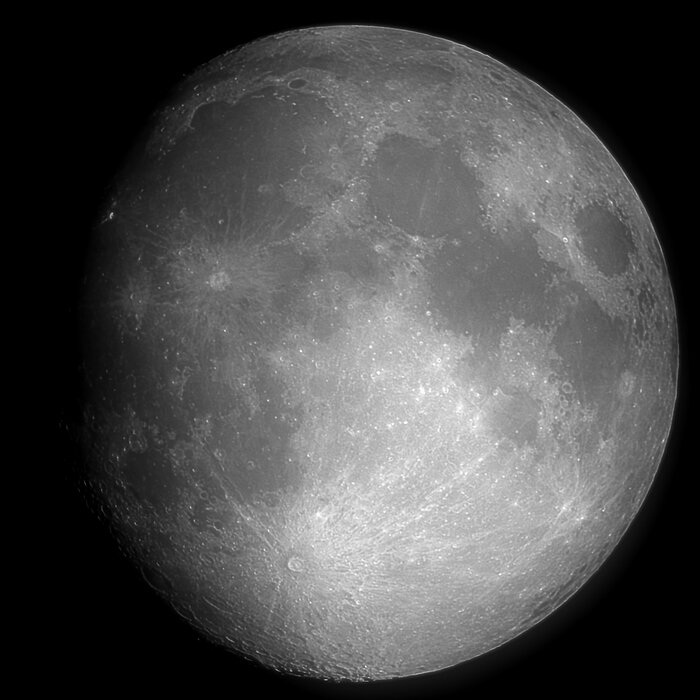The Moon is Earth’s only natural satellite, and it plays a significant role in shaping our planet’s environment and culture. Here are some key facts about the Moon:
Orbit
The Moon orbits Earth at an average distance of about 384,400 kilometers (238,900 miles). It takes approximately 27.3 days to complete one orbit around Earth. Interestingly, the Moon’s orbit is not perfectly circular but slightly elliptical.
Appearance
It has a relatively uniform grayish-white surface, which is covered in craters, mountains, valleys, and plains. Its surface features are the result of impacts from asteroids, comets, and other celestial bodies over billions of years.

The Moon’s surface, often referred to as “lunar rock,” primarily consists of three main types of rock: basalt, anorthosite, and regolith. Basalt is a dark volcanic rock formed from cooled lava, making up much of the Moon’s surface, especially in the lunar maria—large, flat plains created by ancient volcanic activity. In contrast, anorthosite, a lighter-colored rock composed mainly of plagioclase feldspar, is found in the Moon’s highlands, giving these regions their bright appearance.
Additionally, the lunar surface is covered by regolith, a layer of loose, fragmented material that includes dust, small rocks, and fine particles created by the relentless impacts of meteoroids over billions of years. Together, these materials provide valuable insights into the Moon’s geological history and formation processes.

Phases
From Earth, we observe different phases of the Moon as it orbits our planet. These phases include New Moon, Waxing Crescent, First Quarter, Waxing Gibbous, Full Moon, Waning Gibbous, Third Quarter, and Waning Crescent. These phases result from the varying amounts of sunlight that illuminate the Moon’s surface as it moves in its orbit.

Gravity
The Moon has only about one-sixth the gravity of Earth, which means that objects weigh much less on its surface compared to Earth. This lower gravity has led to the formation of unique surface features such as mountains, craters, and “seas” (large, dark basaltic plains).
Tidal Effects
The gravitational pull of the Moon on Earth causes tides in the oceans. As Earth rotates, the ocean waters are pulled towards the Moon, causing high tides. There are also high tides on the opposite side of the Earth due to the centrifugal force caused by the rotation. These gravitational forces also result in tidal friction, which has gradually slowed Earth’s rotation and caused the Moon to move away from Earth at a rate of about 3.8 centimeters (1.5 inches) per year.

Exploration
The Moon has been a target for exploration by both robotic missions and crewed missions. The Apollo program, conducted by NASA in the 1960s and 1970s, resulted in twelve astronauts walking on the lunar surface. Since then, various countries and space agencies have sent spacecraft to study the Moon’s geology, composition, and potential for future human exploration and utilization.
Cultural Significance
Throughout human history, the Moon has held a profound cultural significance, inspiring myths, legends, and religious beliefs in various cultures around the world. It has been a symbol of mystery, romance, and exploration, shaping art, literature, and folklore for millennia.




